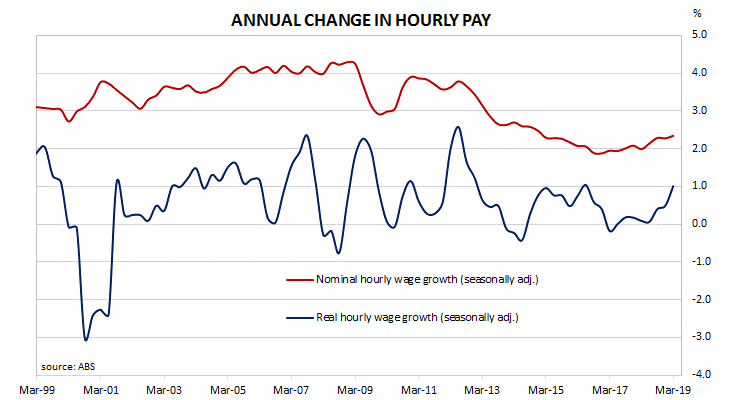After unemployment increased and wage growth slowed during the GFC, a resources investment boom prompted a temporary recovery back to nearly 4% per annum. However, from mid-2013 through to the September quarter of 2016, the pace of wage increases slowed and, through most of 2017, wages increased by less than 2% for a year, not much more than the CPI rate. Since then, the rate of wage growth has accelerated but only very slowly.
According to the latest wage price index (WPI) figures published by the ABS, hourly wages grew by 0.5% in the March quarter, the same as in the December quarter but just under the expected 0.6% increase. The year-on-year growth rate remained unchanged at 2.3%, which makes this quarter the fourth consecutive quarter in which the annual rate has exceeded 2.0%.
 ANZ senior economist Catherine Birch described the report as …”a tale of two sectors: the public sector recorded its slowest quarterly growth in 19 years, while the private sector saw the strongest annual growth in four years.” Westpac senior economist Justin Smirk’s description was less nuanced. “This is a disappointing update and one that will make us take a closer look at our forecast for wage inflation to get back to around 2.75% in 2020.”
ANZ senior economist Catherine Birch described the report as …”a tale of two sectors: the public sector recorded its slowest quarterly growth in 19 years, while the private sector saw the strongest annual growth in four years.” Westpac senior economist Justin Smirk’s description was less nuanced. “This is a disappointing update and one that will make us take a closer look at our forecast for wage inflation to get back to around 2.75% in 2020.”

